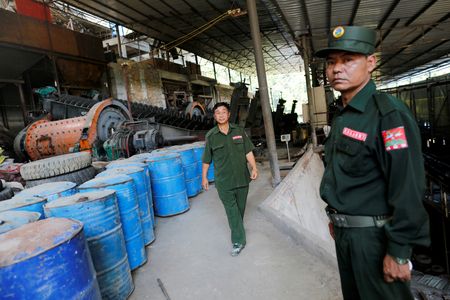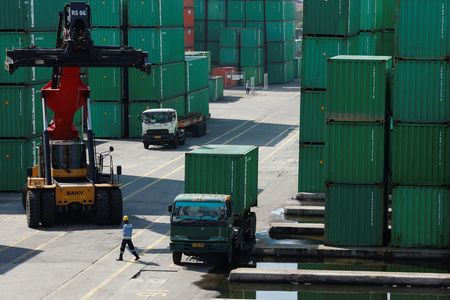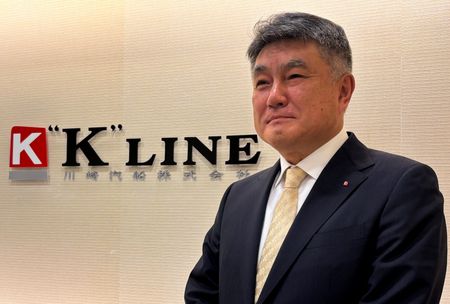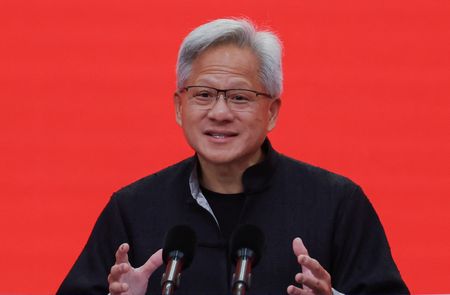(Reuters) – U.S. President Donald Trump’s tariff decisions since he took office on January 20 have shocked financial markets and sent a wave of uncertainty through the global economy.
Here is a timeline of the major developments:
February 1 – Trump imposes 25% tariffs on Mexican and most Canadian imports and 10% on goods from China, demanding they curb the flow of fentanyl and illegal immigrants into the U.S.
February 3 – Trump agrees to a 30-day pause in his tariff threat on Mexico and Canada in return for concessions on border and crime enforcement. The U.S. does not reach such a deal with China.
February 10 – Trump raises tariffs on steel and aluminum to a flat 25% “without exceptions or exemptions”.
March 3 – Trump says 25% tariffs on goods from Mexico and Canada will take effect from March 4 and doubles fentanyl-related tariffs on all Chinese imports to 20%.
March 6 – Trump exempts goods from Canada and Mexico under a North American trade pact for a month.
March 26 – Trump unveils a 25% tariff on imported cars and light trucks.
April 2 – Trump announces global tariffs with a baseline of 10% across all imports and significantly higher duties on some of the United States’ biggest trading partners.
April 9 – Trump pauses for 90 days most of his country-specific tariffs that kicked in less than 24 hours earlier after an upheaval in financial markets erased trillions of dollars from bourses around the world.
The 10% blanket duty on almost all U.S. imports stays in place.
Trump says he will raise the tariff on Chinese imports to 125% from the 104% level that took effect a day earlier. This pushes the extra duties on Chinese goods to 145%, including the previously imposed tariffs.
May 9 – Trump and British Prime Minister Keir Starmer announce a limited bilateral trade agreement that leaves in place 10% tariffs on British exports and lowers U.S. duties on British car exports.
May 12 – The U.S. and China agree to temporarily slash reciprocal tariffs. Under the 90-day truce, the U.S. will cut the extra tariffs it imposed on Chinese imports to 30% from 145%, while China’s duties on U.S. imports will be slashed to 10% from 125%.
May 13 – The U.S. cuts the low value “de minimis” tariff on China shipments, reducing duties for items valued at up to $800 to 54% from 120%.
May 23 – Trump says he is recommending a straight 50% tariff on goods from the European Union starting on June 1. He backpedals on this threat two days later.
He also warns Apple it would face a 25% tariff if phones it sold in the U.S. were manufactured outside of the country.
May 29 – A federal appeals court temporarily reinstates the most sweeping of Trump’s tariffs, pausing an earlier lower court’s ruling to consider the government’s appeal.
June 3 – Trump signs an executive proclamation activating a hike in the steel and aluminum tariffs to 50% from 25%.
June 12 – Trump warns he may soon hike auto tariffs.
July 3 – Trump says the U.S. will place a 20% tariff on many Vietnamese exports, with trans-shipments from third countries through Vietnam facing a 40% levy.
July 6 – Trump says on Truth Social that countries aligning themselves with the “Anti-American policies” of BRICS will be charged an additional 10% tariff.
July 7 – Trump says on Truth Social the additional higher duties announced in earlier months will kick in with a delay on August 1. In letters sent to 14 countries including Japan, South Korea and Serbia, he says that will include tariffs between 25% and 40%.
July 10 – Trump says the U.S. will impose a 35% tariff on imports from Canada in August and plans to impose blanket tariffs of 15% or 20% on most other trading partners.
July 12 – Trump threatens to impose a 30% tariff on imports from Mexico and the EU from August 1.
July 15 – Trump says the U.S. will impose a 19% tariff on goods from Indonesia under a new agreement.
(Compiled by Paolo Laudani and Mateusz Rabiega in Gdansk; editing by Jamie Freed, Lincoln Feast, Matt Scuffham and Milla Nissi-Prussak)













